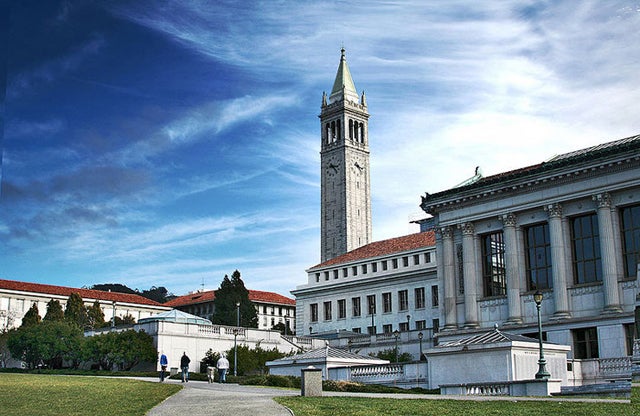We set out to examine which schools are best suited for those of you who arenÔÇÖt willing to let opportunities for adventure sail on by. For those of you who, to paraphrase Angelou, tend to grab life by the lapel and tell it that youÔÇÖre with it, kid. For those of you who can only get rebooted with a shock to the system of air so fresh that it cuts to the core of you, and hauls so long that a blister ripping open signifies satisfaction well had.
Methodology
We developed a scoring key designed to capture all aspects of an institution’s ability to cater to your adrenaline cravings.But this process wasnÔÇÖt about gut feeling. We needed to be methodical, so we developed a scoring key designed to capture all possible aspects of an institutionÔÇÖs ability to cater to your adrenaline-rush cravings.
We learned a few things First, that California dominates. Once all the numbers shook out, it was clear that the academies of the Golden State (public or private, it didnÔÇÖt matter) would most deeply satisfy the yearnings of a soul that needs to be outside. As youÔÇÖll see, California schools occupy our top four spots, and are peppered heartily throughout the rest of the list, a testament not only to the stateÔÇÖs embarrassment-of-riches geography but also to the college administrators whoÔÇÖve made it a point to hold a door open into the wilderness.
We also learned that affordability matters. College kids are notoriously cash-strapped, but that should be the last thing to stop someone from getting out thereÔÇöand even from getting out there well-equipped. Gear, lessons, certificationsÔÇöthese things all cost money in the ÔÇťreal world.ÔÇŁ So if administrators can roll those expenses into the cost of tuition instead of charging adventure-seekers extra, so much the better.
And finally, it became obvious that this is something students really want. High school graduates donÔÇÖt come to college hoping to stay stuck in lecture halls and libraries. They come to absorb ideas, yes, but also to meet likeminded peers and mentors, to be surrounded by as much natural beauty as possible, and to graduate feeling like they milked every possible adventure.
Go to one of these 25 schools, and you can be assured that youÔÇÖll have access to of all of that. Whether you take advantage of it once youÔÇÖre there will be up to you.
01. University of California, Berkeley
02. University of California, Los Angeles
03. Stanford University
04. University of California, San Diego
05. Cornell University
06. University of Arizona
07. Warren Wilson College
08. Cal Poly San Luis Obispo
09. University of Vermont
10. University of Georgia
11. University of Wisconsin, Madison
12. University of California, Santa Cruz
13. Bowdoin College
14. California State University, Humboldt
15. University of Wyoming
16. Alaska Pacific University
17. Reed College
18. University of Oregon
19. University of Iowa
20. University of Hawaii, Manoa
21. University of Arkansas
22. Green Mountain College
23. University of Nevada, Reno
24. University of Alaska, Fairbanks
25. University of Idaho
Nicholas McCarvel contributed reporting.
║┌┴¤│ď╣¤═° University: 01. University of California, Berkeley
Berkeley, California
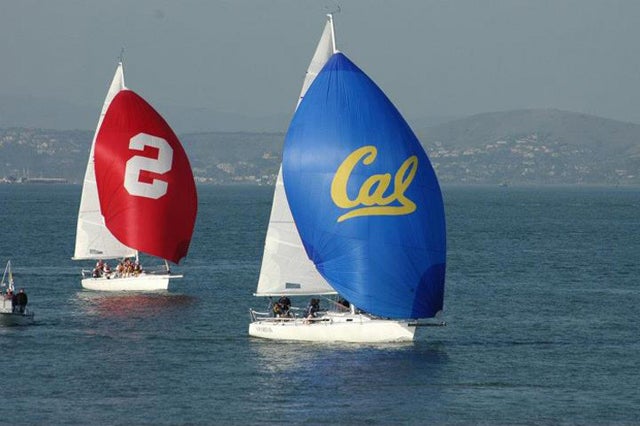
Everyone pictures something different when they think of U.C. Berkeley. Some see strident political protests and drug-happy hippies. Others remember massive frat parties and a dominant sports program rife with Olympians. There are the extreme eccentrics on grungy Telegraph Avenue. And a collection of intellectuals and tastemakers so influential that theyÔÇÖve become household names: Steven Chu, Michael Pollan, Alice Waters.
Whatever your perception of this school, thereÔÇÖs no denying that itÔÇÖs a highly dynamic place where the richness isnÔÇÖt only in the people and the culture, but also the physical surroundings. Just across the water from San Francisco, BerkeleyÔÇÖs forested campus has Strawberry Creek babbling through it, trees that have stood in the schoolÔÇÖs groves since its 1869 founding, and an 800-acre eco-preserve. The weatherÔÇÖs generally mild and pleasant, so the temptationÔÇÖs always there to abscond from the classroom in favor of strapping on hiking boots.
The list of wild places within easy driving distance is too long to list here, but it includes Muir Woods, Mount Diablo State Park, and the bay itself. Really, itÔÇÖs hard to overstate the areaÔÇÖs abundance of outdoor assetsÔÇöstunning nature views are commonplace. Unless youÔÇÖre a snow athlete, thereÔÇÖs almost immediate access to any type of physical pursuit.
Athletically, the Golden Bears are a force to fear. The swimming coach, Teri McKeever, managed this yearÔÇÖs U.S. Olympic team and has trained legends like Natalie Coughlin and Dana Vollmer. Other Cal teams that consistently win national championships include rugby, crew, and sailing.
Lest we forget that Berkeley is widely regarded as AmericaÔÇÖs best public university, itÔÇÖs worth mentioning that top-notch academic departments like agriculture, anthropology, biology, and environmental sciences provide ample opportunities for getting outside the classroom. ÔÇťField Course in Archaeological Methods,ÔÇŁ for example, teaches excavation and mapping, and ÔÇťIntroduction to Environmental SciencesÔÇŁ requires an eight-hour outing.
The outdoor-rec department is pretty high-caliber too. Its catalog is excellent, offering everything from rock-climbing and rappelling clinics to wilderness-medicine classesÔÇöand a small but meaningful selection of trips, including one to backpack Big Sur or Lassen, and another to kayak Point Reyes. There are also scuba classes, including a three-credit course called ÔÇťIntroduction to Scientific Diving.ÔÇŁ
An ║┌┴¤│ď╣¤═°ship Pass ($275 per academic year) buys unlimited equipment rentals at the U.C. Aquatic Center, plus tuition for a well-rounded list of on-the-water classes, including sailing, windsurfing, and SUPing.
A ropes course, strung high in the redwoods of the campusÔÇÖ Strawberry Canyon Recreation Area, presents seven challenging elements, including a zipline.
Alumni look forward to CalÔÇÖs beloved Lair of the Bear family camp, a rugged but spirited all-ages summer experience in the Sierras. Many Berkeley students apply to be counselors and only a few get picked, but the ones who do get rewarded with nature-filled memories for life.
CONTACT: (510) 642-6000,
STUDENT BODY: 25,540 undergraduates, 10,298 graduates
TUITION: residents $11,767, nonresidents $34,645, room and board $15,272
║┌┴¤│ď╣¤═° University: 02. University of California, Los Angeles
Los Angeles, California
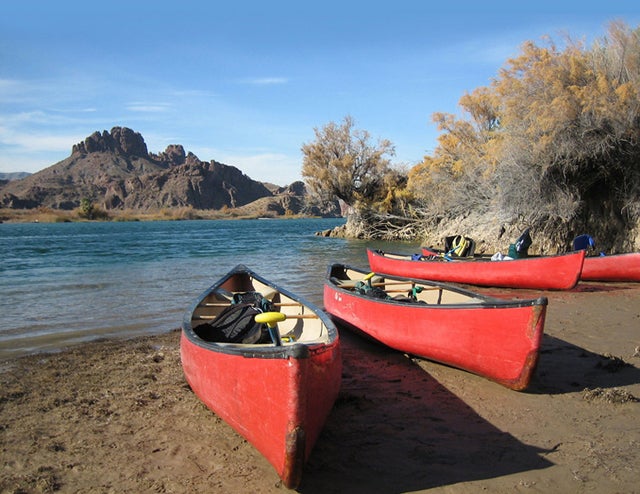
Yeah, this surprised us too. Ruggedness isnÔÇÖt the first thing that comes to mind when stepping onto this very urban, very pretty school that abuts the poshness of Bel-Air. But blonde ing├ęnues and their Hollywood aspirations aside, fresh air, in fact, turns out to be critically important here.
The BruinsÔÇÖ hilly, park-like campus includes a botanical garden and is an easy drive (for Angelenos, that is) to the Hollywood HillsÔÇÖ trails, the woodsy Santa Monica Mountains and their Topanga State Park, and Leo CarilloÔÇÖs teeming tide pools. Santa Monica and Malibu are also nearÔÇöhence all of UCLAÔÇÖs boardshorts-clad men in flip-flopsÔÇötheyÔÇÖre headed to Zuma after class.
This is L.A., so the weather barely needs mentioning, but weÔÇÖll point it out anyway: With 73 percent possible sunshine per year, youÔÇÖre guaranteed that the majority of your days here will be beautiful.
To make sure that your studies get you outside, major in anthropology, biology, geography, marine biology, or environmental science (sample classes: ÔÇťCoastal Ecology in Southern ThailandÔÇŁ and ÔÇťLos Angeles WatershedÔÇŁ). Even if you donÔÇÖt major in his subject matter, take a class from geography professor Jared Diamond, the Pulitzer-winning author of Guns, Germs, and Steel.
Speaking of steel, the athletes here are nothing to mess with. UCLA holds 108 national team titlesÔÇömore than any other schoolÔÇöand water polo and beach volleyball players regularly fetch Olympic medals. The womenÔÇÖs sailing team, too, is one of the nationÔÇÖs best.
Rec facilities include the John Wooden CenterÔÇöthe schoolÔÇÖs main gym, with a 15-rope rock wallÔÇöand the Marina Aquatic Center, whose robust list of programs includes rowing, sailing, SUPing, windsurfing, sculling, ÔÇťbirding by kayak,ÔÇŁ full-moon paddles, eskimo-roll clinics, and scuba certification ($240).
Both centers rent equipment at reasonable rates: An Osprey backpack is $14 for three days, a 24-speed bike is $8, and snowshoes cost $10. Kayaks are free for two hours, $10 for a day. Local getaways (like a ÔÇťsustainability day hikeÔÇŁ in Temescal Canyon) range from about $20 to $50 while trips farther afield (ÔÇťBackpack Catalina IslandÔÇŁ) move into the $300 realm. For $125, students become wilderness guides via UCLAÔÇÖs year-long outdoor-leadership training program, which makes use of a tree-centric challenge course located by the dorms.
Students can also gain outdoor-leadership skills by applying to be camp counselors at Bruin Woods, the alumni associationÔÇÖs popular family camp up on Lake Arrowhead. Summer activities there include waterskiing, hiking, mountain biking, horseback riding, and a full schedule of events designed to leave kids loving nature.
CONTACT: (310) 825-4321,
STUDENT BODY: 26,162 undergraduates, 13,431 graduates
TUITION: residents $11,604, nonresidents $34,482, room and board $13,979
║┌┴¤│ď╣¤═° University: 03. Stanford University
Stanford, California
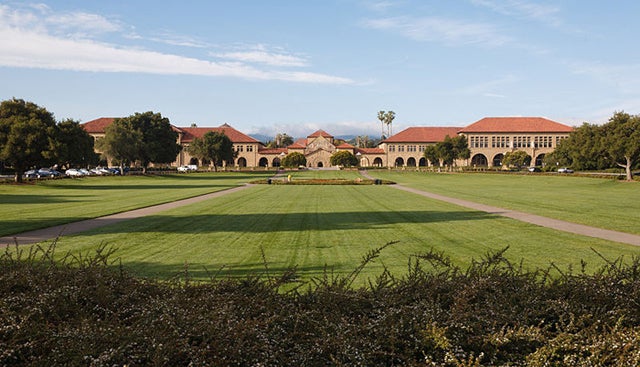
Stanford could be described as half country club, half bucolic nature preserve. Most of its 8,180 acres arenÔÇÖt even used for academic purposes, but remain open to ÔÇťprovide a rare opportunity for comprehensive land use and resource management,ÔÇŁ according to the schoolÔÇÖs website. The bike-riddled campus covers two ZIP codes and encompasses 49 miles of road, three water systems, more than 43,000 trees (not including the football mascot), and 800 plant species.
Despite this being the heartbeat of Silicon Valley, a surprising woodsiness abides. The vast, temperate stretches of rolling hills at the southern end of the San Francisco peninsula invite wildlife biologists and pleasure seekers alike. ThereÔÇÖs a deep casualness to the culture here, and even during high-stakes meetings, Stanford denizens rarely wear anything fancier than jeans.
Make no mistake, though: This is a private school as elite as they come. The stellar academic lineup loops in much outdoor fieldworkÔÇöwhich can often be done right on campus. The geology departmentÔÇÖs coursework, though, gets you into Death Valley or the White Mountains. And the strong hydrology program offers field study and research opportunities in wetlands, meadows, and developing countries.
Even if youÔÇÖre more of an arts student, Stanford can get you outdoor-savvy: The phys-ed departmentÔÇÖs many clubs and programs include canoeing, kayaking, surfing, windsurfing, alpining, and scuba certification. Participation can be pricey, but subsidies are available to those who need them. Rentals are affordable, though, and the thorough list includes headlamps ($2 per day), tents ($6), gaiters ($2), and avalanche probes ($3). ThereÔÇÖs also an annual equipment swap during which students nab gear on the cheapÔÇöthe swap is part of StanfordÔÇÖs Climbers Rage Against Gravity (CRAG) event, which also involves a bouldering contest on StanfordÔÇÖs 25-rope wall, slacklining, music, and film.
New students get to take a five-day pre-orientation trip ($500, with financial aid available), in either the eastern Sierra or on a sustainable farm. All other students can sign up for the outdoor-ed departmentÔÇÖs adventure trips, a newish program that specializes mostly in ski busses to Tahoe but promises more options soon.
The Cardinal sports program, on the other hand, has a storied history: Stars who got their start here include John Elway, Tiger Woods, and Kerri Walsh. Stanford athletes have represented at the Summer Olympics every year since 1908. In 2008 alone, they came home from Beijing with 24 medals.
CONTACT: (650) 723-2300,
STUDENT BODY: 6,927 undergraduates, 8,796 graduates
TUITION: $40,569, room and board $12,291
║┌┴¤│ď╣¤═° University: 04. University of California, San Diego
La Jolla, California
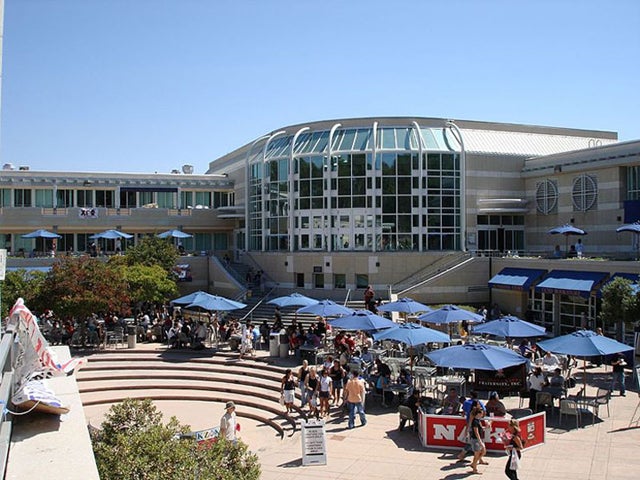
ItÔÇÖs all about the water here. UCSD boasts nationally ranked surfing and sailing teams, and its Mission Bay Aquatic Center claims to be the planetÔÇÖs biggest instructional waterfront facility, teaching more than 15,000 people per year to row, wakeboard, paddle, sail, surf, and dive. It rents out big equipment, from full-on sailboats to Hobie Cats to water-ski boats (skipper included). The schoolÔÇÖs recreation office rounds out that selection by lending out low-cost body boards, snorkels, and wetsuits, plus providing a repair shop that mends too-used gear.
The universityÔÇÖs Scripps Institution of OceanographyÔÇöa hugely important hub for the study of the seaÔÇöoffers graduate programs that take full advantage of the fact that itÔÇÖs on the edge of the mighty Pacific.
Landlubbers need not overlook the home of the Tritons, though. Many of the classes offered here, especially those that are needed for a forestry degree, get you out into the field.
ThereÔÇÖs a ropes-based obstacle course on campus and a well-run recreation department that organizes affordable adventure journeys, like bouldering locally or backpacking Joshua Tree, and puts on an outdoor-themed film series that, says its website, ÔÇťis about building Stoke.ÔÇŁ
With the sweeping, majestic Torrey Pines State Park just five miles away, and weather that arguably bests anywhere else in America, San DiegoÔÇÖs your spot if you want your four years to be filled with sunshine and saltwater.
CONTACT: (858) 534-2230,
STUDENT BODY: 23,663 undergraduates, 5,513 graduates
TUITION: residents $12,128, nonresidents $35,006, room and board $11,684
║┌┴¤│ď╣¤═° University: 05. Cornell University
Ithaca, New York
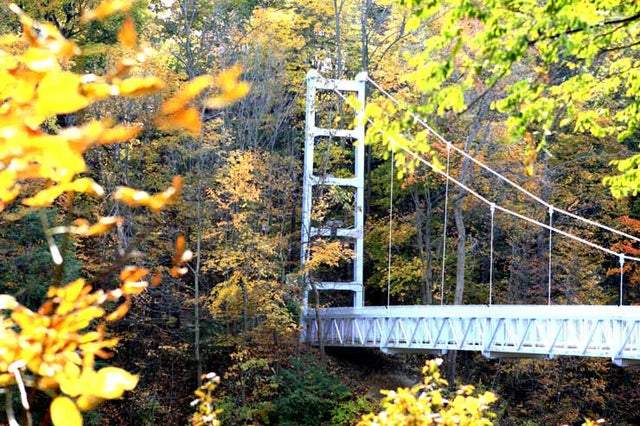
This Ivy League academy has educated a staggeringly impressive roster of people, including eight NASA astronauts, Bill Nye (the science guy), and Henry Heimlich, who developed the life-saving maneuver. With such luminaries for professors as Carl Sagan and Jane Goodall, itÔÇÖs no wonder students here have gone on to do great things.
Ithaca itself can be pretty great: ItÔÇÖs a central New York town 26 miles from Finger Lakes National Forest, near glacier-carved gorges made the more beautiful by cascading waterfalls. CornellÔÇÖs outdoor-ed program offers an impressive array of activities to take advantage of these natural surroundingsÔÇöand while the full spectrum of options is far too long to list here, a sampling might include backpacking, caving, cycling, climbing, skiing, or paddling. Many of these classes can be taken for credit, and for free.
Also quite affordable is a good selection of equipment to rent: A set of camping utensils costs just 50 cents, while telemark skis run $20 per day. Certifications, however, can get rather expensive: You can become expert at scuba, rescue diving, or belaying, but itÔÇÖll set you back anywhere between $200 and $600.
For incoming students, the Outdoor Odyssey program puts on four-, six-, and eight-day trips (ranging in cost from free to $500) to backpack, bike, canoe, and climb the Catskills, Adirondacks, and the Green and White mountains.
Back on campus, the Lindseth climbing wall is the continentÔÇÖs biggest indoor natural-surface rock wall, offering more than 4,800 square feet to scramble upward on. ThereÔÇÖs also the Kay 2 bouldering wall and two challenge courses (one indoors, one outdoors in the woods) that incorporate all kinds of elements, including a 400-foot zipline. Cornell also has a tree-climbing institute, whichÔÇÖll teach you how to ascend and descend a trunk, or how best to move about a canopy.
Lots of academic courses can get you into fresh air too, especially if your major is agriculture, environmental engineering, or plant sciences. One class, in the department of International Agriculture and Rural Development, is called ÔÇťAgriculture in Developing Nations.ÔÇŁ After a semester of lectures and discussions, the capstone lesson is a two-week trip to see IndiaÔÇÖs cultures and ecology.
CONTACT: (607) 255-2000,
STUDENT BODY: 13,935 undergraduates, 7,004 graduates
TUITION: $41,541, room and board $13,160
║┌┴¤│ď╣¤═° University: 06. University of Arizona
Tucson, Arizona
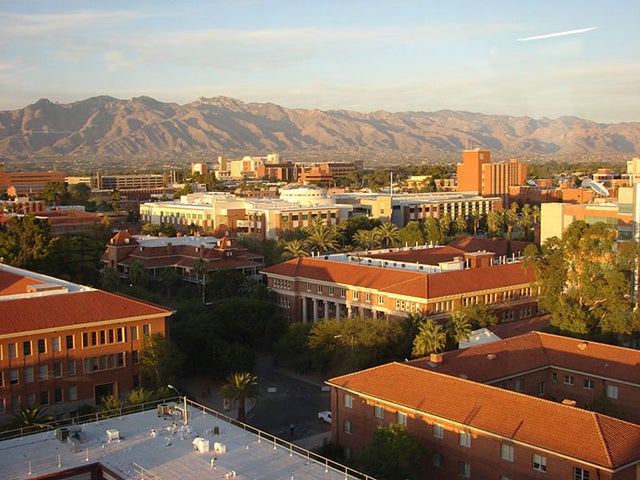
Two words: Grand Canyon. ItÔÇÖs may be a six-hour drive away, but itÔÇÖs worth the haul. To get there, you go through the much closer Tonto National Forest and past the Sonoran Desert Monument. The schoolÔÇÖs also 16 miles to Saguaro National Park and an hour from the severely underrated Kartchner Caverns State Park, with its limestone wonders.
Tucson is the brightest destination on this list, with 85 percent possible sunshine per yearÔÇöbut be prepared to sweat, because daytime lows, between spring and fall, rarely dip below 80 degrees Farenheit. The desert climate, though, paired with the proximity to premier outdoor playgrounds, are part of what make U. of A. so great for nature lovers.
Outdoor programming here isnÔÇÖt always grade-A, but options do include surf trips, midnight hiking, and, of course, Grand Canyon camping. Outings are relatively affordable (a local mountain bike ride costs $20) and so is a good variety of rental equipmentÔÇöclimbing shoes and a chalk bag are free to borrow, and brand-name tents and sleeping bags start at $8 per day.
The popular Challenge Program features a ropes course, and its staff offers a two-credit class about how to facilitate teambuilding. The rec center, whose planned expansion is set to meet LEED Platinum standards, has a rock wall and scuba-certification classes.
Academically, this is one of AmericaÔÇÖs most outdoor-focused universities, with more than 100 regional fieldwork programs. One class works with the elders of the White Mountain Apache tribe to get ethnography and GIS research experience, while the College of Agriculture turns the Santa Rita Experimental Range (about 30 miles south of Tucson) into a real-life lab for groundbreaking sustainable-management research.
After graduation, alumni with disposable income can spend it on the contents of a well-planned catalog of global travel, including a $7,000 Antarctica expedition, a $4,250 Lindblad-led journey on the Sea of Cortez, or Astronomy Camp ($750) atop the Santa Catalina Mountains.
CONTACT: (520) 621-3237,
STUDENT BODY: 30,592 undergraduates, 8,494 graduates
TUITION: residents $9,286, nonresidents $25,496, room and board $8,540
║┌┴¤│ď╣¤═° University: 07. Warren Wilson College
Asheville, North Carolina
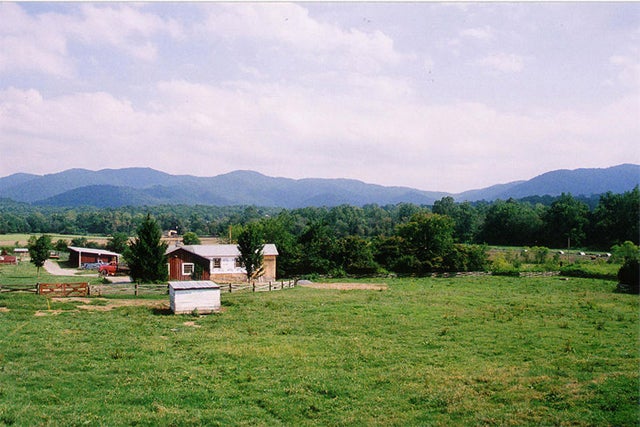
Warren Wilson is a small, unique school on the outskirts of Asheville, in AppalachiaÔÇÖs Blue Ridge Mountains. A curriculum called “the Triad” requires students to, in addition to completing their requisite classes, work an on-campus job and do at least 100 community-service hours before they can graduate.
One of the collegeÔÇÖs most popular majors is ÔÇťOutdoor Leadership,ÔÇŁ the idea of which is ÔÇťto prepare graduates who will have the academic background, skills, and experience necessary to analyze, plan, implement, administer, and supervise outdoor-adventure education programs.ÔÇŁ Classes include psychology, ornithology, astronomy, and top-rope site management, during which students learn belaying, rappelling, and how to rescue a partner.
WWC also offers a solid English program, plus an MFA for writers, which is what drew James Franco, star of 127 Hours, to spend time here studying poetry.
The club-sports program isnÔÇÖt very extensive but it does includes ultimate frisbee, rowing, archery, and fencing. Mountain biking is a varsity team; last year, its members won a silver medal in Division II of the collegiate national championships.
In terms of recreation programs, thereÔÇÖs caving, rafting, canoeing, kayaking, orienteering, skiing, snowboarding, and winter campingÔÇöand some of those will even move you toward graduation. An eight-day Wilderness First Responder class, for example, culminates in certification and earns you one academic credit.
Gear rentals are often free and wilderness outings are affordableÔÇöthough thereÔÇÖs much to get into right around the school: a river runs through its center, thereÔÇÖs a working farm on site, hundreds of acres of forest, and a network of hiking trails that lace through campus.
When you graduate, you can stay involved by beautifying the campus; alums have built a rock wall, a campus path, and more. Alumni also travel places together, like Costa Rica to help develop sustainable-agriculture practices there.
CONTACT: (828) 298-3325,
STUDENT BODY: 924 undergraduates, 68 graduates
TUITION: $26,674, room and board $8,212
║┌┴¤│ď╣¤═° University: 08. Cal Poly San Luis Obispo
San Luis Obispo, California
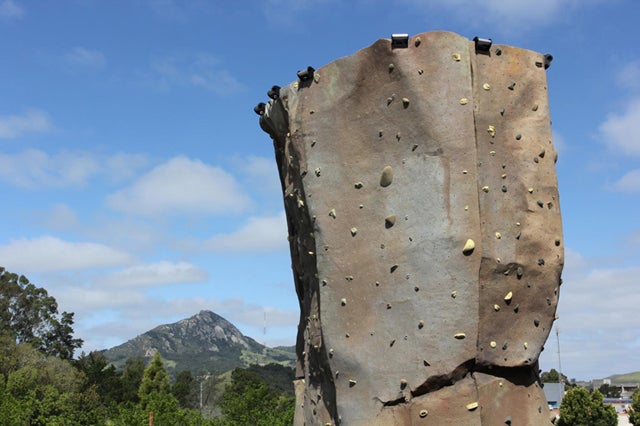
San Luis Obispo is an easygoing town near CaliforniaÔÇÖs central coast. ItÔÇÖs got sunny, mild weather, lots to do, and a young, up-for-anything population. ItÔÇÖs a 20-minute drive to beautiful Pacific beaches, and three hours in either direction to L.A. or San Francisco.
Mustangs like to head to the sandy Pismo Dunes for ATVing and to Morro Bay, with its distinctive nearshore rock island, for its high chances of spotting a sea otter or a rare bird. The campus is also 13 miles to rugged, windswept Montana de Oro State Park.
A university program called Poly Escapes offers about 20 affordable trips each quarter, including summer. Most are led by students whoÔÇÖve become experts in locally available activities like climbing, night caving, geocaching, snowshoeing, surfing, kayaking, bird-watching, and backpacking. Participants get 50 percent off rental gear prices, which are reasonable even without the discount (SUP boards, for example, cost $18 per day). And thereÔÇÖs an annual student gear swap, during which you can buy, sell, or trade used equipment.
The campusÔÇÖ brand-new outdoor climbing park offers ropes on a 42-foot wall and free-climbing on a 13-foot bouldering rock. All levels are welcome, and students use it free. For those wanting to use their hands some other way, Cal PolyÔÇÖs Craft Center offers surfboard-shaping classes, skateboard-making workshops, and an introduction to flameworking.
A department called Marine Operations offers scientific diving classes and PADI certification ($245), and maintains a university-run pier, a key launch point for ocean research and education.
Agriculture is another big academic focus here and as such, there are lots of majors and minors thatÔÇÖll get you out into the field and the nearby farmÔÇöto name a few: fruit science, ornamental plant production, and landscape horticulture.
Alumni get access to adventure-travel package deals; though those programs can be expensive, theyÔÇÖd be no problem for successful Cal Poly graduates like Clif Bar founder Gary Erickson, ultramarathoner Dean Karnazes, or Robert J. Mazzuca, the Boy ScoutsÔÇÖ chief scout executive.
CONTACT: (805) 756-1111,
STUDENT BODY: 17,332 undergraduates, 1,028 graduates
TUITION: residents $7,921, nonresidents $19,081, room and board $10,444
║┌┴¤│ď╣¤═° University: 09. University of Vermont
Burlington, Vermont
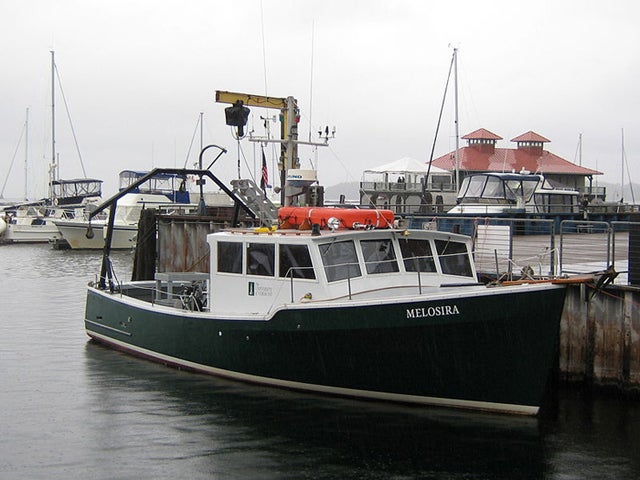
Burlington manages to be one of the nationÔÇÖs greener, more liberal cities while still maintaining a small-town vibe. ItÔÇÖs on Lake Champlain, near the Green and Adirondack Mountains, and an easy drive from Mt. Mansfield State Forest. UVMÔÇÖs campus is adjacent to the Centennial Woods Natural Area, and the Winooski River runs nearby.
To take advantage of all that Vermont wilderness, the schoolÔÇÖs 100-year-old Outing Club runs classes in sailing, climbing, and scuba, as well as almost daily outings, including hiking trips ($15), backpacking weekends ($30), telemarking and ice-climbing lessons ($40), and canoeing overnights ($40). The rental policy is fair ($10 per day for a tent, $2 for a stove or ski poles) and the range of equipment is decent but not huge.
New students are encouraged to participate in the six-day Wilderness Trek program ($550 to $900, with financial aid available) before starting classes ÔÇťto build lasting friendships, initiate self-discovery, and explore the people and landscapes that are Vermont.ÔÇŁ These late-summer outings are led by upperclassmen, and ÔÇťTrekkiesÔÇŁ can choose a journey based on their sport of interest: rock-climbing, hiking (up to eight miles per day), canoeing in Adirondack National Park, kayaking the North Country, or cycling (30 miles daily) the Lake Champlain Valley.
If youÔÇÖre more of a snow-sports personÔÇöand are really talentedÔÇögo out for the varsity ski teams, which are perennial powerhouses on a national level. Or the freeski club or the snowboard team, both of which had medal winners at the USASA nationals.
Professors, for their part, make sure their pupils experience VermontÔÇÖs wealth of nature. Classes that require fieldwork span departments, but to ensure that you spend your study time heading out a lot, major in agriculture, animal science, biology, environmental studies, or wildlife and fisheries biology. Two classes, ÔÇťFlorida Ecology Field TripÔÇŁ and ÔÇťTexas Wildlife Field Trip,ÔÇŁ examine the ecosystems of other states. Back in Vermont, the schoolÔÇÖs horticulture farm and master-gardener class helps students graduate knowing how to grow food and flowers.
In the Bolton Valley Ski area is UVMÔÇÖs cabin, a woodsy structure thatÔÇÖs available to students, staff, and alumni for $15 to $20 per person per nightÔÇöitÔÇÖs right near a network of hiking trails and prime locations for skiing, rock and ice climbing, and canoeing and kayaking.
CONTACT: (802) 656-3131,
STUDENT BODY: 11,593 undergraduates, 1,961 graduates
TUITION: residents $14,784, nonresidents $34,424, room and board $9,708
║┌┴¤│ď╣¤═° University: 10. University of Georgia
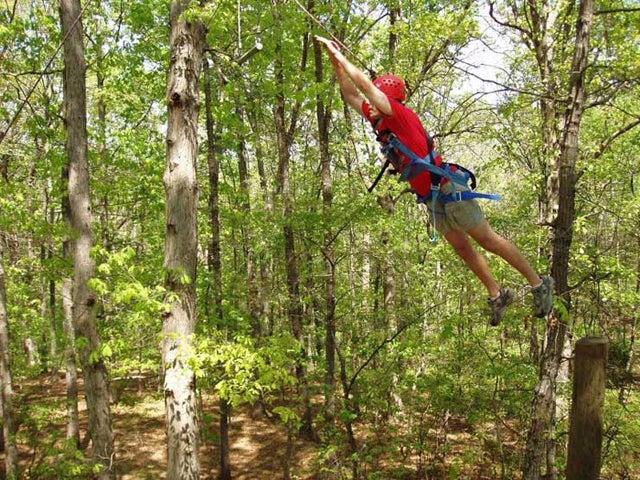
UGAÔÇÖs eco-friendly Ramsey Center is, at eight acres, one of AmericaÔÇÖs biggest student recreation facilities. With two gyms, three pools, a track, an indoor climbing wall, and an outdoor bouldering wall, itÔÇÖs got everything any type of athlete would need to maintain peak physical condition. On Lake Herrick, another rec center offers beach volleyball and canoeing.
Other campus assets include the┬áGeorgia Museum of Natural History (one of the stateÔÇÖs most impressive collections of natural artifacts), the 38-acre┬áCoastal Plain Research Arboretum┬á(in┬áTifton), and the┬áUniversity of Georgia Marine Institute on Sapelo Island. The main campus is 30 miles from Oconee National Forest and, with 60 percent possible sunshine per year, can often promise decent weather.
The Georgia Outdoor Recreation Program (GORP) offers trips and classes, including wakeboarding instruction and scuba certification. Students can also get phys-ed credits for adventure classes in Costa Rica (surfing, hiking, horseback riding, rafting, kayaking, and rainforest-canopy ziplining) and Australia (boating, hiking, even snorkeling the Great Barrier Reef)ÔÇöthough these trips are, for a student, expensive.
Rentals, though, are well-priced and thereÔÇÖs a great variety to choose from, including wetsuits, backpacks, stoves, coolers, compasses, and a variety of tents.
In sports, rowing and wakeboarding are competitive on a national level, and the bass anglers club won a regional competition.
Academically, the horticulture program is a highlight, offering a look into everything from commercial flower production to attracting backyard birds.
Alumni stay involved by taking part in an annual float down the Northern Colorado River.
CONTACT: (706) 542-3000,
STUDENT BODY: 25,947 undergraduates, 8,730 graduates
TUITION: residents $9,472, nonresidents $27,682, room and board $8,708
║┌┴¤│ď╣¤═° University: 11. University of Wisconsin, Madison
Madison Wisconsin
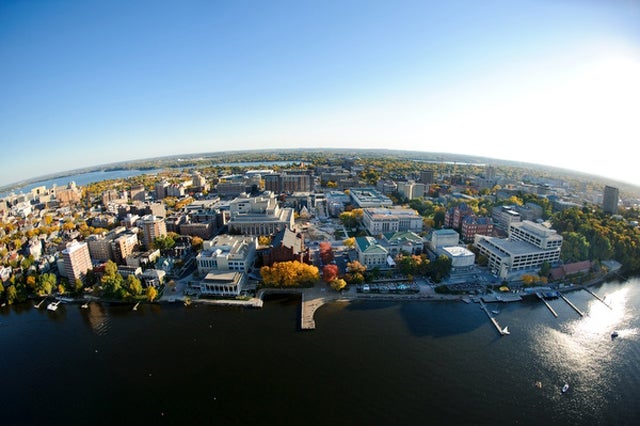
John MuirÔÇÖs alma mater is positioned between two lakes, Monona and Mendota, so big portions of campus are waterfront, including a running path that weaves through the Lakeshore Nature Preserve.
Madison is one of the MidwestÔÇÖs most diverse and liberal towns. Its Badgers have an unusually fierce and lifelong love for their school and comprise whatÔÇÖs maybe AmericaÔÇÖs most excitable collegiate fan base. Though the cheering is most often reserved for the football team, UWÔÇÖs outdoor-rec group, the Hoofers, has a storied history too: ItÔÇÖs been volunteer-run since its 1931 founding, with a mission of teaching members (non-students can join too) outdoor skills via activities like backpacking, canoeing, caving, skiing, biking, kayaking,┬á and top-roping. The student union rents a limited but reasonably priced selection of equipment; canoes, for example, cost $26 per day, while tents start at $5, including ground tarp.
Many of WisconsinÔÇÖs academic classes require outdoor fieldwork. On Lake Mendota, the Center for Limnology (the word means ÔÇťstudy of inland watersÔÇŁ), adjacent to the Hoofer ClubÔÇÖs sailing dock, lets students and faculty study things like how native fish species hunt the invasive rusty crayfish.
Bring your heavy Patagonia jacket, thoughÔÇöMadison reaches crazy lows in winter. On days when itÔÇÖs too cold to go outside, keep your skills sharpened on the unionÔÇÖs two-story climbing wall.
If youÔÇÖre a legacy, bring your living ancestors to Grandparents UniversityÔÇöyouÔÇÖll be able to take a two-day class with Nana; options include entomology and restoration ecology.
CONTACT: (608) 263-2400,
STUDENT BODY: 30,555 undergraduates, 12,040 graduates
TUITION: residents $9,671, nonresidents $25,421, room and board $7,780
║┌┴¤│ď╣¤═° University: 12. University of California, Santa Cruz
Santa Cruz, California
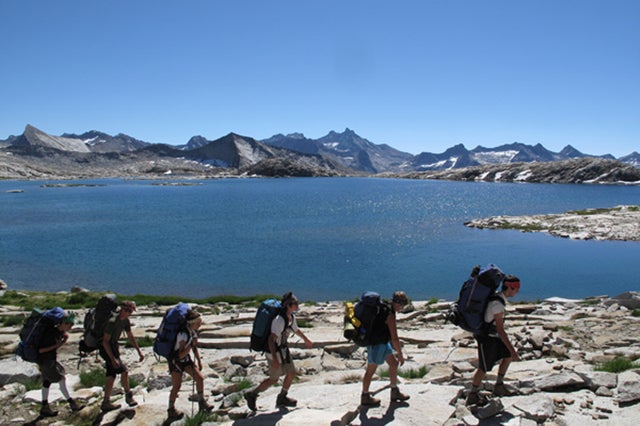
When you step onto this fairytale-like campus, donÔÇÖt be surprised to see fawns prancing around the greenery, backdropped by sprawling views of the Pacific.
UCSC sits perched on life-filled Monterey Bay, with the jewels of this California coastal region all around: Big Sur, Big Basin, A├▒o Nuevo. This is the heartbeat of the NorCal surf scene, complete with MaverickÔÇÖs deadly wavesÔÇöand the human territorialism that comes with.
The university offers five levels of SCUBA classes, and for good reason: thereÔÇÖs an incredibly deep submarine canyon here that brings forth an explosion of all strata of sea life; CarmelÔÇÖs clear waters give an excellent view of it all, as does the Monterey Bay Aquarium, where the parade of swimming things stretches the bounds of imagination.
Needless to say, the marine biology department is popular. Its students work with the federal agencies stationed here, including the USGS and U.S. Fish and Wildlife. The research reaches high calibers: Just this year, a student- and faculty-run data-gathering project won a NASA award.
As well as touching the sea, the Banana SlugsÔÇÖ campus also neighbors the redwood-and-fern-filled Santa Cruz Mountains. The rec and phys-ed programs take full advantage of both biomes, offering a range of classes and trips, from surfing, sailing, kayaking, and rowing to hiking, backpacking, camping, and climbing. Equipment rentals are affordable, and the free bicycle library teaches students to fix their own wheels.
Incoming freshman can go on a wilderness orientation ÔÇťto form new friendships and discuss their hopes and fears for the upcoming university experience.ÔÇŁ ItÔÇÖs either a 10-day backpacking trip in the Sierras, or an eight-day kayak excursion on Tomales Bay.
Before you matriculate, though, you should know that the Santa Cruz culture is aggressively environmentalÔÇöand all other kinds of liberal too. The library maintains a Grateful Dead archive and you can major in History of ConsciousnessÔÇöone person who did was Huey P. Newton, a Black Panthers co-founder.
CONTACT: (831) 459-0111,
STUDENT BODY: 15,668 undergraduates, 1,507 graduates
TUITION: residents $14,727, nonresidents $35,211, room and board $12,333
║┌┴¤│ď╣¤═° University: 13. Bowdoin College
Brunswick, Maine
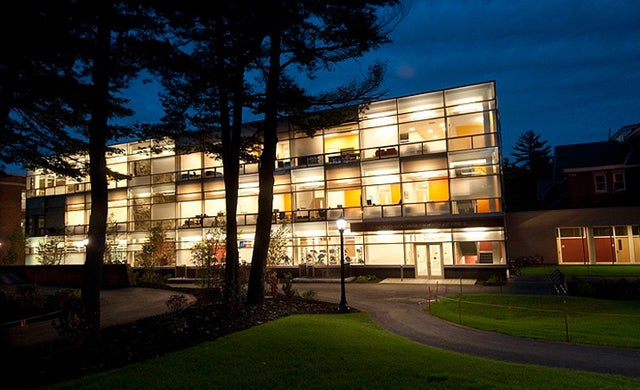
One of the more elite liberal-arts colleges (take a gander at the tuition), Bowdoin hosts sailing regattas and owns land on Merritt Island, from whence school-affiliated people launch sea-kayaking and canoeing voyages. Bowdoin also owns a coastal-studies center on Orrs Island and a 200-acre field station on the Bay of FundyÔÇÖs Kent Island. Not surprising, then, that the oceanographic program (and surfing the Atlantic) is a big deal here.
There are other courses of study, though, thatÔÇÖll get you outdoors. The urge to study all aspects of nature is strong here, so fieldwork courses are manyÔÇöthey include ÔÇťThe Science of Food and WineÔÇŁ and ÔÇťThe Physics of the Environment.ÔÇŁ
As for BowdoinÔÇÖs Outdoor Club, itÔÇÖs unique for its strong telemarking program; participants take Sunday classes on Saddleback Mountain. Other activities are reasonably priced (not more than $50 on average) and include whitewater rafting, climbing, and leadership training. For hikers, a student-built cabin in Monson (a two-hour drive from campus), just off the Appalachian Trail, can serve as base camp. Climbers drive three hours to the White Mountains and Mount Washington, the NortheastÔÇÖs most challenging peak. Those with less aggressive outdoor ambitions can cruise the seven miles from campus to idyllic, wildlife-filled Baxter State Park.
Need gear? Pay just $45 at the beginning of the academic year to be entitled to take anything anytime you want.
Bowdoin, chartered by one Sam Adams, is the alma mater of ubiquitous names like Henry Wadsworth Longfellow and Nathaniel Hawthorne but also graduated Robert Peary, the guy who claimed to have led the first successful North Pole expedition in 1908 (though thereÔÇÖs doubt about that) and Donald Baxter MacMillan, another important Arctic explorerÔÇötwo men whose legacy probably has something to do with the fact that the schoolÔÇÖs mascot is a polar bear.
CONTACT: (207) 725-3000,
STUDENT BODY: 1,762 undergraduates, zero graduates
TUITION: $42,816, room and board $11,654
║┌┴¤│ď╣¤═° University: 14. California State University, Humboldt
Arcata, California
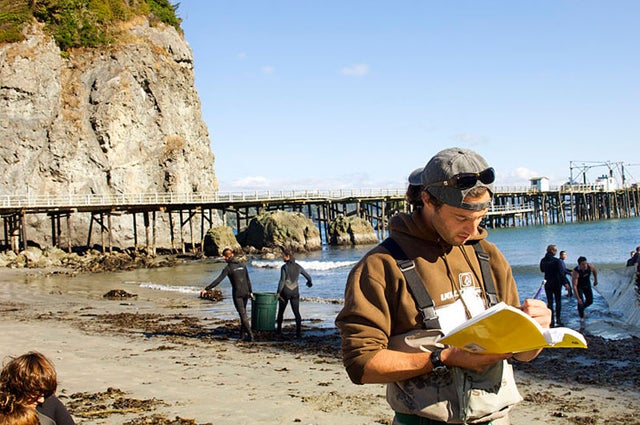
When Californians think of far-north Humboldt, they think redwoods and hippiesÔÇöand plant-based drugs, sometimes. Though those elements definitely exist, thatÔÇÖs a bit of a simplification: The university emphasizes responsibility, both ecological and physical.
Students can become certified swiftwater rescuersÔÇöwhich involves an in-depth look at river dynamicsÔÇöor wilderness first responders. The focus on outdoorsy heroism extends into academic programs, too, such as wildfire management.
At Humboldt State, you can study environmental protection, watershed management, or fisheries biology (thereÔÇÖs an on-campus hatchery). The forestry program is extensive, and the campus greenhouse holds one of the most diverse plant collections in CaliforniaÔÇöthe better to serve environmental-biology classes with.
Fifteen miles north, in Trinidad, is the Marine Lab, whose recirculating seawater system is perfect for growing sea animals. The whole main campus, though, has views of the Pacific and is just west of the beauty that is Trinity National Forest.
Extracurricular classes maintain a good emphasis on adventure: ThereÔÇÖs cross-country skiing, rock-climbing, cycling, all manner of paddling and rafting, sailing, surfing, and outdoor skills (Dutch-oven cooking, for instance). Excursions include backpacking trips into the legendary redwoods and coastal bikingÔÇöin fact, the newish cycling programs have already been competitive on a national level, and the menÔÇÖs crew team is always a powerhouse on the national scene.
Backpacking trips hover around $70, and gear rentals (windsurfers, canoes, rock-climbing stuff, and much more) are reasonably priced too: $45, for example, makes a sailboat yours for the day.
CONTACT: (707) 826-3011,
STUDENT BODY: 7,222 undergraduates, 680 graduates
TUITION: residents $6,474, nonresidents $12,750, room and board $10,486
║┌┴¤│ď╣¤═° University: 15. University of Wyoming
Laramie, Wyoming
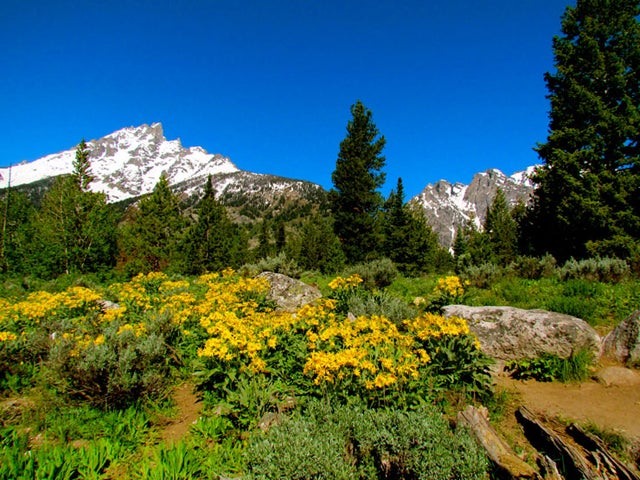
UW might be in Wyoming but itÔÇÖs closer to Denver than it is to the Grand Tetons or Yellowstone. Still, Roosevelt National Forest and Banforth National Wildlife Refuge are, respectively, 80 and 10 miles away. These federal lands let the schoolÔÇÖs forestry program offer classes in recreation, park administration, and interpretation. The botany department gives a course in edible mushrooms, and in zoology, students help manage a fishery.
The rec program offers non-credit lessons (rock climbing, fly fishing, mountaineering, whitewater kayaking, cross-country skiing, avalanche safety, and bike maintenance among them) and maintains an agreement with the National Outdoor Leadership School for crossover classes, which means that Wyo students can go abroad to study adventure topics for credit; a backpacking course in Australia is a popular option.
There are also domestic trips and wilderness-leadership programs, which take participants on more than 40 multi-day trips into the backcountry all year round. Once a month, a free Friday-night bouldering trip happens, and thereÔÇÖs often the chance to head to Yellowstone or the Grand Canyon.
Incoming freshmen can choose from six outdoors trips (backpacking, caving, mountain biking, rock climbing, canoeing, or a wilderness service project; all about $175) to meet new friends and bond with classmates. More seasoned collegians can get a certification (Wilderness First Responder or scuba), borrow (or fix) wheels at the bike library, or rent from a decent menu of gear, ranging from $2 for a bear canister to $38 for a canoe.
The Cowboys have left a legacy in a few places: the menÔÇÖs and womenÔÇÖs Nordic skiing teams have storied programs, together having won nine national titles over the last 10 years. And legendary free-climber Todd Skinner was an alumÔÇöhis almost 500 first ascents included two in YosemiteÔÇöEl CapÔÇÖs Salathe Wall and Half DomeÔÇÖs northwest direct routeÔÇöbefore he died there during a rappel.
CONTACT: (307) 766-1121,
STUDENT BODY: 10,079 undergraduates, 2,832 graduates
TUITION: residents $9,084, nonresidents $13,428, room and board $4,278
║┌┴¤│ď╣¤═° University: 16. Alaska Pacific University
Anchorage, Alaska
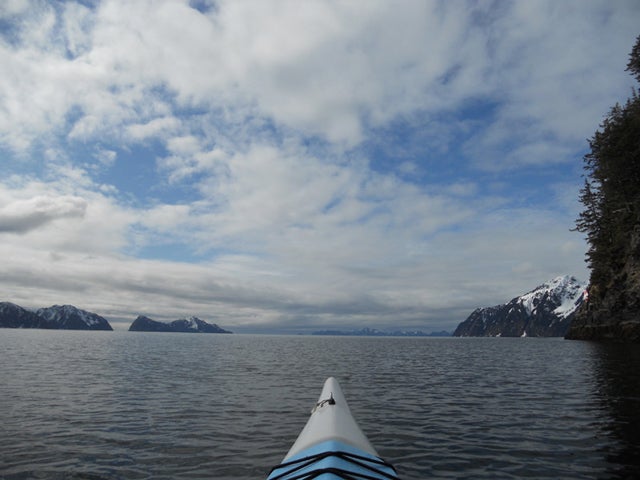
If youÔÇÖre willing to relocate to Anchorage, you can major in Outdoor Studies, a program whose fieldwork classes can include glaciology, snow and avalanche science, and marine biology.
Access to your subject matter wonÔÇÖt be difficult: APU (formerly Alaska Methodist University) is right near lakes and wilderness parks. Its rec centerÔÇÖs catalog lists whitewater kayaking, open boating (free), and kayak polo (also free). Students can work toward a Wilderness First Responders certification via a for-credit class.
The tundra biome shapes which sports students are good at. The Nordic ski club is a perennial powerhouse, thanks in part to the schoolÔÇÖs ski center, which offers skill-building classes at seven levels. A student named Kikkan Randall is an Olympian who was also the first American woman to win a World Cup in cross-country skiing.
If skis arenÔÇÖt your preferred mode, though, thereÔÇÖs also ice climbing and, right on campus, a rock wall and hiking trails. Many of the schoolÔÇÖs trips and clinics are free or very inexpensive, including Pivot Point climbs and Copper River rafting. And the gear selectionÔÇÖs greatÔÇöthe costliest one-day rental is a canoe package that includes everything you need for $15.
Alaska Pacific is a member of the Eco League, a consortium of five small colleges dedicated to educating environmentally and operating sustainably.
Though APUÔÇÖs student body is so tiny that itÔÇÖs possible to know almost everyone, its campus is adjacent to the University of Alaska, Anchorage, the stateÔÇÖs biggest higher-ed institution, amplifying the intellectualÔÇöand physicalÔÇöresources APU students can access by many degrees.
CONTACT: (800) 252-7528,
STUDENT BODY: 519 undergraduates, 213 graduates
TUITION: $27,160, room and board $9,300
║┌┴¤│ď╣¤═° University: 17. Reed College
Portland, Oregon
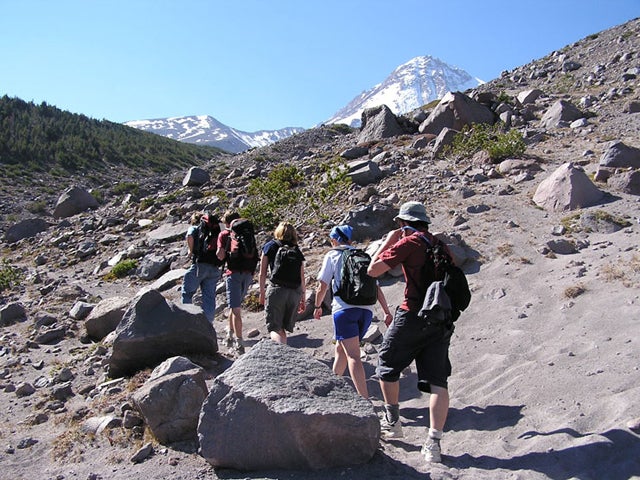
Founded by Columbia River pioneers as an alternative to the elitism of the East Coast Ivies, Reed is known for its progressive, anti-establishment leanings. The campus is surrounded by state and national land, including Mount Hood National Forest 17 miles to the east. ItÔÇÖs bisected by a canyon thatÔÇÖs also a national wildlife preserve with its own hiking trail.
Though students are encouraged to be as free-thinking as possible (Steve Jobs was a Reed dropout), physical education is a requirement for graduation, an imperative that can be fulfilled with classes like backcountry navigation, bouldering, hiking, horseback riding, or kayaking.
The biology department will also get you outside: A course called ÔÇťField Biology and Natural History of Amphibians of the Pacific NorthwestÔÇŁ takes field trips to a variety of amphibian-heavy habitats.
New students are strongly encouraged to participate in an ÔÇťorientation odyssey,ÔÇŁ options for which include rafting the Deschutes ($490) or backpacking the Cascades ($325). After putting a bit of time in at Reed, you can plan and lead your own outdoor outingÔÇöa whole how-to handbook exists to guide those interested. Alternatively, you can just join a trip that someone else organized: ThereÔÇÖs always a good list of everything from rafting the Clackamas to surfing excursions on the Oregon coast. Gear is rented for free for two weeks, so you can pick up packs, sleeping bags, stoves, snowshoes, trekking poles, or whatever else youÔÇÖll need.
Alumni wanting to experience, as its website says, ÔÇťthe communal nature of the sleeping, living, and cooking areasÔÇŁ of the Reed Ski Cabin in Government Camp, along the Mount Hood Scenic Byway, get ÔÇťa great opportunity to practice the art of living under Reed’s honor principle.ÔÇŁ
CONTACT: (503) 771-1112,
STUDENT BODY: 1,457 undergraduates, 17 graduates
TUITION: $44,460, room and board $11,460
║┌┴¤│ď╣¤═° University: 18. University of Oregon
Eugene, Oregon
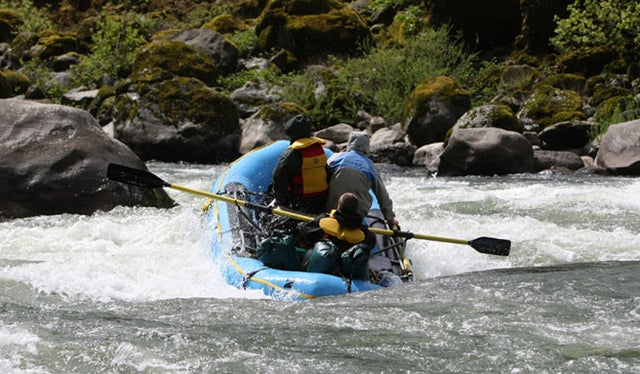
Sports are big here. Really big. Maybe because one of U.O.ÔÇÖs most famous alums is Nike founder Phil Knight (hence the athletesÔÇÖ ever-rotating wardrobe of swoosh swag)ÔÇöor maybe itÔÇÖs just that being in a place between two national forests (Williamette and Siuslaw) makes you want to get out and get the blood moving.
The Ducks are rabid fans and wear their green and gold long after graduationÔÇöespecially green. Environmental Studies is one of the most popular academic programs here, an interdisciplinary department with class offerings like ÔÇťWetland Ecology and ManagementÔÇŁ and ÔÇťNorthwest Ethnobotany.ÔÇŁ
Much goes on outside the lecture halls, though. The ROTC programÔÇÖs Ranger Challenge, open to any U.O. student who can make the team, is a varsity sport that puts cadets through mental and physical tests including orienteering, a road ruck, and the one-rope bridge.
If youÔÇÖre a world-level track star, chances are youÔÇÖll race in U.O.ÔÇÖs annual Prefontaine Classic. If youÔÇÖre not, cheer from the stands and sign up instead for the schoolÔÇÖs Outdoors Pursuit program, which provides a good variety of backcountry-oriented leadership training and survival lessons. It offers classes for credit, like avalanche safety and vertical rescue techniques, and hosts two adventure-themed film festivals each year.
Club sports here include cycling, triathlon, climbing, surfing, equestrian, sailing, scuba, bass fishing, and all kinds of skiing and boarding.
ThereÔÇÖs a bike-maintenance shop and clinic (rent a bicycle for $60 per year), a beloved rock wall ($11 buys a year of unlimited use), a massive fitness center, and the Rental Barn, where you can get gear for snowboarding (about $25 for all youÔÇÖll need), whitewater riding ($100 for a seven-person raft and paddles), and camping ($10 per tent). Outings are affordable too, rarely tipping $15 plus the cost of gas.
Though the 295-acre campus conveys a peaceful, tree-enhanced serenity, U.O. incubates a bit of a rough-around-the-edges culture that leads graduates to become people like Ken Kesey (the psychedelic writer of One Flew Over the CuckooÔÇÖs Nest), Chuck Palahniuk (author of Fight Club), and Ann Bancroft, the first woman to have gotten to the North Pole by foot and dogsled.
CONTACT: (541) 346-1000,
STUDENT BODY: 20,631 undergraduates, 3,816 graduates
TUITION: residents $2,570, nonresidents $26,478, room and board $10,261
║┌┴¤│ď╣¤═° University: 19. University of Iowa
Iowa City, Iowa
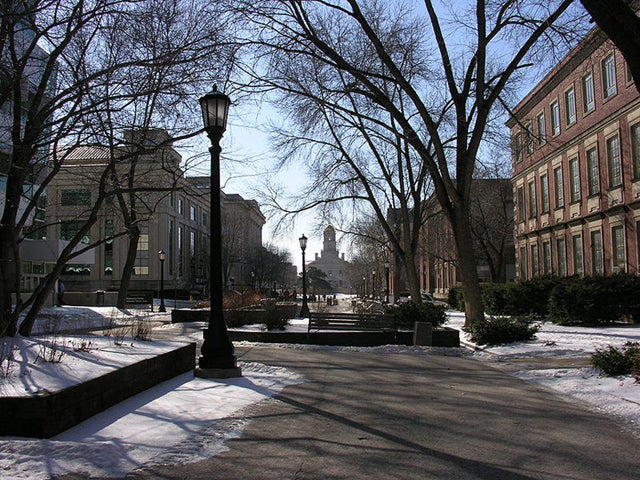
Hawks donÔÇÖt let the fact that IowaÔÇÖs a landlocked state hold them back. With the Iowa River running right through campus and Lake MacBride State Park a 20-minute drive away, theyÔÇÖve got plenty of ways to get in the drink.
U. IowaÔÇÖs outdoor-education program, called “Touch the Earth,” plans an impressive (but slightly expensive) trip roster that covers the range of what you might want to do. Among the offerings: Local camping, paddling, kayaking, and moonlight-canoeing trips (about $75); climbing excursions to NevadaÔÇÖs Red Rocks ($800); paddling in FloridaÔÇÖs Everglades National Park ($645); and hiking ColoradoÔÇÖs 14ers ($645).
A program called ÔÇťLifetime Leisure SkillsÔÇŁ maintains a spectacular list of classes that count toward your degree. Enliven your transcript with rowing, mountain (or tandem) biking, trail running, marathon training, orienteering, land navigation, snowshoeing, a team-building challenge course, or a class called ÔÇťExploring the Natural Wonders of Iowa,ÔÇŁ which involves a weekend of hiking and camping the Loess Hills or the Yellow River Forest. The sailing club offers classes too.
ThereÔÇÖs a 52.5-foot, eight-rope climbing wall, and an array of gear available for rent, with water sports, camping, cycling, and cold-weather protection highlighted. Need to strap a roof-rack storage tub to your car? ThatÔÇÖs $5.
Academically, plenty of majors offer the chance to do wildlife research in the field: anthropology, biology, engineering, environmental science, and science education among them. Round out your conservation-themed class schedule by volunteering for the MacBride Raptor Project, through which you can help rehabilitate and track hawks, falcons, eagles, and osprey.
In case you become inspired to write of your pursuits, graduate, if you can, into the universityÔÇÖs WritersÔÇÖ Workshop, a highly prestigious first step to a Pulitzer: alumni include Wallace Stegner, Philip Roth, John Irving, and Kurt Vonnegut.
CONTACT: (319) 335-3500,
STUDENT BODY: 21,565 undergraduates, 9,328 graduates
TUITION: residents $8,057, nonresidents $26,279, room and board $9,170
║┌┴¤│ď╣¤═° University: 20. University of Hawaii, Manoa
Honolulu, Hawaii
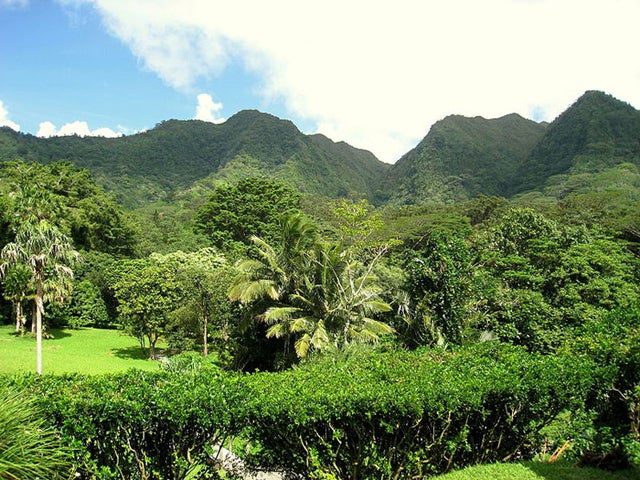
HereÔÇÖs an idea: Go to school where people go to vacation.
You know the draws: tropical breezes, OahuÔÇÖs miles of pristine surf, and a citizenry that lives its life in board shorts and flip-flops. Everything may seem to go by a bit slower on land (ÔÇťisland time,ÔÇŁ itÔÇÖs called) but in the water, the sporting can reach high speeds.
U.H.ÔÇÖs rec center is set up to get students atop and into the ever-moving ocean, offering surfing (boards are $10 per day; the legendary north-shore waves of Haleiwa are 33 miles away), SUPing, snorkeling, kayaking, and body boarding. The sailing instruction is four-tiered and the scuba class fee ($210) also buys certification.
Hikers get their fill too: the campus abuts Waahila State Recreation AreaÔÇöwhose ridge trail offers gorgeous viewsÔÇöand is a 20-minute drive to the HaÔÇÖiku Stairs trail, often called ÔÇťthe stairway to heavenÔÇŁ for its spectacular 360-degree view across the island once you conquer its 3,922 steps (note that this isnÔÇÖt entirely legal to do but start before dawn and the guards may look the other way). U.H. students also get to be just five miles from iconic Diamond Head and its worthy path to the top.
Academically, this is an obvious hub for oceanic research. One class, called ÔÇťCorals and Coral Reefs,ÔÇŁ needs you to get underwater. If you plan to spend more time in these climes after you graduate, consider a major within the College of Tropical Agriculture and Human Resources, whose classesÔÇÖ fieldwork will make you an expert about the Pacific islandsÔÇÖ plants and soils.
HonoluluÔÇÖs got sunshine all year round and not a small amount of urban jungleÔÇöHawaiiÔÇÖs capital city offers all that a world-caliber destination should, from a legitimate public-transit system to nightclubs packed with beautiful bodies.
CONTACT: (808) 956-8975,
STUDENT BODY: 13,912 undergraduates, 6,425 graduates
TUITION: residents $9,100, nonresidents $23,932, room and board $10,279
║┌┴¤│ď╣¤═° University: 21. University of Arkansas
Fayetteville, Arkansas
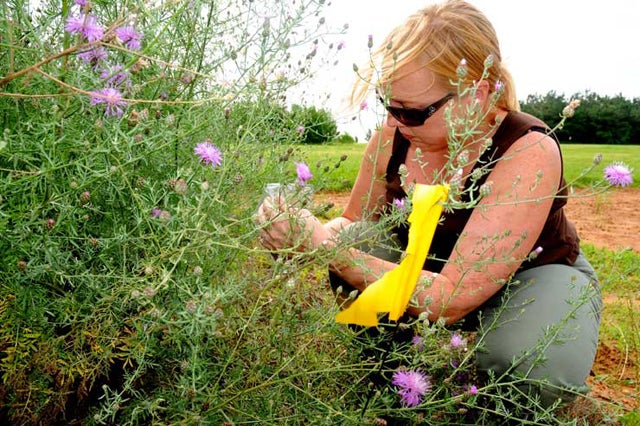
FayettevilleÔÇÖs pretty outdoorsy, drawing people from all over the South to its trails and greenwaysÔÇöand its 218 yearly days of sun. ItÔÇÖs got an office of sustainability (a growing trend for smaller cities), so things should stay fairly verdant around here. Among its past residents are Bill and HillaryÔÇöcheck out the Clinton House, where the power couple got hitched in 1975, and where they lived while they taught at U.A.ÔÇÖs law school.
Even though the universityÔÇÖs rec department doesnÔÇÖt give a ton of adventure classes, it does offer a huge variety of affordable rentals and plenty of minimally priced trips too: The kayaking excursions for women are among the most popular (and sometimes include yoga) but the ice-climbing trips to Iowa and ski trips to Colorado also get lots of love. A free bike-fix clinic is a boon for cyclists.
An abundance of classes get students out of the lecture hall, including one from the crop-management program called ÔÇťWeed Identification, Morphology, and Ecology.ÔÇŁ
Extracurricularly, thereÔÇÖs a leadership program that trains students to be able to head up outings, two extensive fitness centers stocked with a bouldering and a rock wall, and a crazy-active 4-H club, whose goal is to take kids ÔÇťout of the classroom and into the outdoors.ÔÇŁ
U.A. also puts on a conference called ÔÇťArkansas ║┌┴¤│ď╣¤═° ProgrammingÔÇŁ to connect students who are outdoor-ed enthusiasts with like-minded folk. ItÔÇÖs held at a dude ranch called Horseshoe Canyon Ranch, where more than 300 bolted climbing routes await.
Other nearby attractions for outdoorsy types include Hobbes State Park, Beaver Lake (500 miles of shoreline), and, of course, the Ozarks and all they offer.
For alumni with money to spend, there are occasional travel-with-your-fellow-Razorbacks opportunities. The most recent one was a $4,000 cruise through AlaskaÔÇÖs Inside Passage.
CONTACT: (479) 575-2000,
STUDENT BODY: 17,247 undergraduates, 4,158 graduates
TUITION: residents $7,174, nonresidents $17,606, room and board $8,330
║┌┴¤│ď╣¤═° University: 22. Green Mountain College
Poultney, Vermont

This schoolÔÇÖs name and tagline (ÔÇťLiving the environmental liberal artsÔÇŁ) say it all. G.M.C. is a tiny, progressive college where a signature major is ÔÇť║┌┴¤│ď╣¤═° Education.ÔÇŁ Sample class description: ÔÇťStudents will learn the fundamentals of running international mountaineering expeditions during this 20-day program in the Ishinca Valley of Peru.ÔÇŁ
Everyone here cares deeply about the future of our planet, and the curriculum strongly reflects that: Degrees are offered in environmental studies, natural-resources management, and sustainable food systems, with minors in recreation, animal studies, geology, and ÔÇťtherapeutic adventure.ÔÇŁ
Tucked between the Adirondack and Green mountains, the park-like campus, though just 155 acres, manages to fit an organic farm, a ropes course, and hiking trails. Dorm residents wanting roommates with whom to head into the backcountry can choose to live on an outdoor-recreation floor.
The list of trips Green MountainÔÇÖs adventure program offers can impress even the most widely traveled┬á adventurer. Just this past spring semester, almost 50 journeys went out, ranging from the modest (a snowshoe day hike) to the elaborate (a week-long backcountry ski-and-snowboard trip in NewfoundlandÔÇÖs Gros Morne National Park).
More locally, the Green Mountains provide some of New EnglandÔÇÖs best ski slopes, the Poultney River is dotted with popular swim holes, and G.M.C.ÔÇÖs rec department lends out major outdoor gear for $1 per day (among the offerings: water filters, hatchets, and crampons).
This is southern VermontÔÇÖs lakes region, so there are three tiers of for-credit scuba classes. ThereÔÇÖs also a first-aid certification course and, for new students, the sport-spanning Wilderness Challenge, which puts kayaking, backpacking, and climbing skills to the test.
CONTACT: (800) 776-6675,
STUDENT BODY: 710 undergraduates, 81 graduates
TUITION: $29,316, room and board $10,640
║┌┴¤│ď╣¤═° University: 23. University of Nevada, Reno
Reno, Nevada
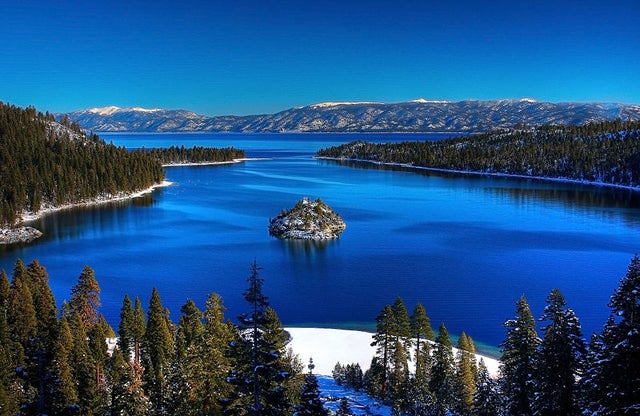
Think Reno and you may envisage a glitzy, gambling-heavy city whose northern-little-brother relationship with Vegas leads it to call itself ÔÇťThe Biggest Little City in the World.ÔÇŁ
Remember, though, that the majestic Sierras are just beyond all that neon. Lake Tahoe, Donner Pass, the PCT, and the Truckee River are all less than 45 miles away. And the otherworldly Black Rock Desert (Burning ManÔÇÖs sacred ground) is an hourÔÇÖs drive.
With 79 percent possible sunny days per year and a trove of places to ski, hike, raft, paddle, sail, and tube, NevadaÔÇÖs student body gets out a lot, a fact helped by the more than 20 classes that require fieldwork.
The high-caliber engineering program sends students to Great Basin National Park to study the possibilities for geothermal energy, and thereÔÇÖs a well-rounded set of environmental majors, including ecohydrology, forest management, and veterinary science. You can also take triathlon and marathon classes for credit. For fun, amble the hiking trails near the university.
On-campus amenities for the adventurous include a rock wall, a ropes course, and an affordableÔÇöbut slightly limitedÔÇöselection of rentals, including kayaking equipment and cross-country shoes and skis. The ski and ride clubs (membershipÔÇÖs free but travels arenÔÇÖt) take lots of trips, while the P.E. department teaches people to ski, snowboard, raft, kayak, climb, and survive. A scuba-certification class culminates in Lake Tahoe.
When youÔÇÖre done taking risks in the wild for the day, you can go gamble it all in a casino.
CONTACT: (775) 784-1110,
STUDENT BODY: 14,820 undergraduates, 3,184 graduates
TUITION: residents $6,176, nonresidents $19,771, room and board $10,868
║┌┴¤│ď╣¤═° University: 24. University of Alaska, Fairbanks
Fairbanks, Alaska
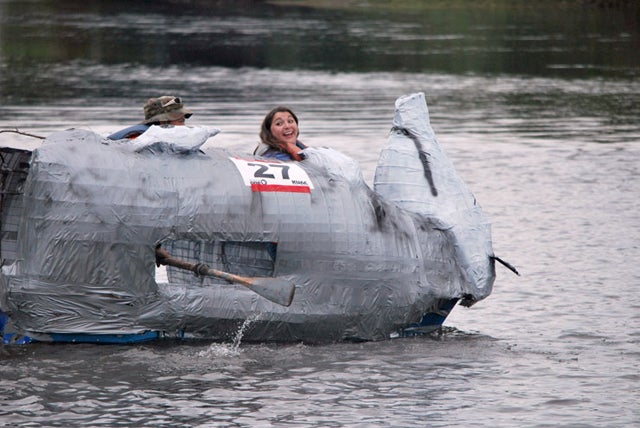
Want to take a class called ÔÇťArctic backpackingÔÇŁÔÇöfor credit? How about ÔÇťField Methods of GlaciologyÔÇŁ? ThereÔÇÖs nowhere in America to do it but, of course, Alaska. A mere hundred miles from the entrance to Denali Wilderness and surrounded on the map by big green patches, U.A.F. proffers access to the wild world at its most basic and pure.
Fairbanks isnÔÇÖt for everyone, though. The longest winter days promise no more than four hours of sun, and temperatures regularly dip to negative 20 degrees Farenheit.┬á The upshot, however, is encompassed in two mighty, magical words: Aurora Borealis.
U.A.F.ÔÇÖs five remote satellite campuses are hubs for the outdoor research the schoolÔÇÖs known forÔÇöitÔÇÖs no coincidence that Mark Myers, a recent director of the U.S. Geological Survey, is an alum.
A minor called ÔÇťGuiding Management,ÔÇŁ a program called ÔÇťWilderness Leadership,ÔÇŁ and the Wood rec center all offer classes that Nanooks can take for credit, including expedition rafting, rock climbing, winter camping, bike maintenance and repair, ski mountaineering, and ice climbing (the description of which says, ÔÇťThis is a perfect opportunity to try something some people never dream of doingÔÇŁ). Students can also get belay-certified to practice their edging and pinching on an indoor climbing wall and an outdoor tower, take advantage of a free bike-loan and -fix clinic, and look forward to a ropes course coming soon.
Wilderness outings are affordable; favorites include a berry-picking day hike on local trails, a whitewater raft trip on the Class II/III Nenana River, and a granite-tors overnight. An excellent selection of equipment is available for rent (including $35-per-day canoes), and itÔÇÖs broken into three categories: summer gear, winter gearÔÇöand avalanche gear.
CONTACT: (907) 474-7211,
STUDENT BODY: 8,652 undergraduates, 1,203 graduates
TUITION: residents $6,075, nonresidents $17,715, room and board $6,960
║┌┴¤│ď╣¤═° University: 25. University of Idaho
Moscow, Idaho
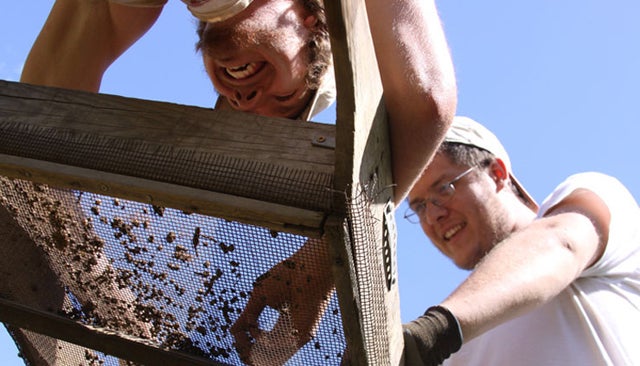
First thing to know: DonÔÇÖt mispronounce the name of this collegeÔÇÖs town. The last syllable is ÔÇťcoe,ÔÇŁ not ÔÇťcow.ÔÇŁ Also, the quaint village hosts a bunch of quirky events including an annual hemp fest.
Put a toe over the cityÔÇÖs western border and youÔÇÖll be in WashingtonÔÇöthe nine-mile trail that connects Moscow and Pullman (home of Washington State University) is popular among cyclists and hikers. MoscowÔÇÖs an easy drive (about 50 miles) from Idaho Panhandle National ForestÔÇöbut attire yourself correctly. This is the Pacific Northwest, so the chance of rain is always: probably.
On campus, classes that can be taken for credit include ÔÇťOutdoor Leisure Pursuits,ÔÇŁ ÔÇťProfessional Involvement in Recreation,ÔÇŁ and ÔÇťRiver Reading and Whitewater Safety.ÔÇŁ Dozens of academic courses require fieldwork, especially if youÔÇÖre majoring in agricultural systems, American Indian studies, fishery resources, hydrology, plant science, or rangeland ecology. ThereÔÇÖs also a minor called ÔÇťOutdoor Recreation Leadership.ÔÇŁ
In case youÔÇÖd prefer to get your hit of sky and soil separate from your curriculumÔÇöand in case youÔÇÖre as poor as college students usually areÔÇöget in on I.U.ÔÇÖs affordable (and sometimes female-only) trips. Offerings include whitewater kayaking ($30), sailing ($55), mountaineering ($70), and weekly mountain-biking excursions (just $4).
The equipment available to borrow is pretty stellar: sleeping bags and tents, skis and snowboards, catarafts and climbing gear. One-day rentals typically price in the single digits. (Need a pair of La Sportivas? ThatÔÇÖll be $3.50.) And a climbing center offers classes for all skill levels, plus a rock wall with a 55-foot pinnacle.
CONTACT: (888) 884-3246,
STUDENT BODY: 9,330 undergraduates, 1,850 graduates
TUITION: residents $6,212, nonresidents $19,000, room and board $7,682
║┌┴¤│ď╣¤═° University: Methodology
We set out to examine which schools are best suited for those of you who arenÔÇÖt willing to let opportunities for adventure sail on by. For those of you who, to paraphrase Angelou, tend to grab life by the lapel and tell it that youÔÇÖre with it, kid. For those of you who can only get rebooted with a shock to the system of air so fresh that it cuts to the core of
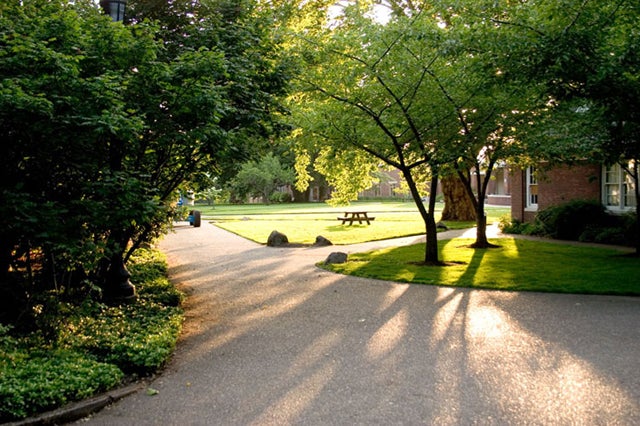
This process wasnÔÇÖt about gut feeling. We needed to be methodical, so we developed a scoring key designed to capture all possible aspects of an institutionÔÇÖs ability to cater to your adrenaline-rush cravings.
Over the last couple of months, we split the country into five regions (Northwest, Southwest/California, Northeast, Southeast, and Alaska/Hawaii) and set about selecting 40 different schools that we thought might meet the 10 criteria for an ║┌┴¤│ď╣¤═° University, detailed below. Then we scored them to create the list you see here.
ÔÇöBreadth of outdoor-adventure recreation program as determined by the number of types of activities offered.
ÔÇöAffordability of the average outdoor-adventure trip/wilderness outing offered by a school’s recreation center.
ÔÇöProximity of campus to state or national parks.
ÔÇöDays of sunshine per year in the campus’ city or town.
ÔÇöNumber of the school’s outdoor-adventure-oriented sports clubs/teams (surfing, rock climbing, sailing, snowboarding, skiing, waterskiing, wakeboarding, rowing, cycling, and similar sports, but not including swimming or indoor or court sports) that are nationally ranked within the top 20.
ÔÇöExistence and quality of summer camp/family recreation program for alumni.
ÔÇöAcademic courses offered that require outdoor fieldwork.
ÔÇöAvailability and cost of outdoor-recreation equipment available for renting or borrowing on campus.
ÔÇöNumber and cost of certification programs or guide schools offered on campus (SCUBA, river-rafting guide, rock-climbing instructor, etc.)
ÔÇöAvailability of on-campus training facilities and resources.


